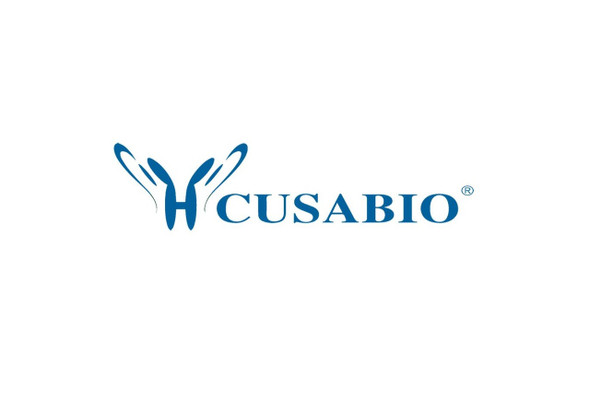Cusabio Mouse Recombinants
Recombinant Mouse Asialoglycoprotein receptor 1 (Asgr1), partial | CSB-YP002207MO
- SKU:
- CSB-YP002207MO
- Availability:
- 25 - 35 Working Days
Description
Recombinant Mouse Asialoglycoprotein receptor 1 (Asgr1), partial | CSB-YP002207MO | Cusabio
Alternative Name(s): Hepatic lectin 1 ;HL-1 ;mHL-1
Gene Names: Asgr1
Research Areas: Others
Organism: Mus musculus (Mouse)
AA Sequence: QNSQLREDLLALRQNFSNLTVSTEDQVKALSTQGSSVGRKMKLVESKLEKQQKDLTEDHSSLLLHVKQLVSDVRSLSCQMAAFRGNGSERTCCPINWVEYEGSCYWFSSSVRPWTEADKYCQLENAHLVVVTSRDEQNFLQRHMGPLNTWIGLTDQNGPWKWVDGTDYETGFQNWRPEQPDNWYGHGLGGGEDCAHFTTDGRWNDDVCRRPYRWVCETKLDKAN
Source: Yeast
Tag Info: N-terminal 6xHis-tagged
Expression Region: 61-284aa
Sequence Info: Extracellular Domain
MW: 27.8 kDa
Purity: Greater than 90% as determined by SDS-PAGE.
Relevance: Mediates the endocytosis of plasma glycoproteins to which the terminal sialic acid residue on their complex carbohydrate moieties has been roved. The receptor recognizes terminal galactose and N-acetylgalactosamine units. After ligand binding to the receptor, the resulting complex is internalized and transported to a sorting organelle, where receptor and ligand are disassociated. The receptor then returns to the cell mbrane surface.
Reference: Lineage-specific biology revealed by a finished genome assembly of the mouse.Church D.M., Goodstadt L., Hillier L.W., Zody M.C., Goldstein S., She X., Bult C.J., Agarwala R., Cherry J.L., DiCuccio M., Hlavina W., Kapustin Y., Meric P., Maglott D., Birtle Z., Marques A.C., Graves T., Zhou S. , Teague B., Potamousis K., Churas C., Place M., Herschleb J., Runnheim R., Forrest D., Amos-Landgraf J., Schwartz D.C., Cheng Z., Lindblad-Toh K., Eichler E.E., Ponting C.P.PLoS Biol. 7:E1000112-E1000112(2009)
Storage: The shelf life is related to many factors, storage state, buffer ingredients, storage temperature and the stability of the protein itself. Generally, the shelf life of liquid form is 6 months at -20?/-80?. The shelf life of lyophilized form is 12 months at -20?/-80?.
Notes: Repeated freezing and thawing is not recommended. Store working aliquots at 4? for up to one week.
Function: Mediates the endocytosis of plasma glycoproteins to which the terminal sialic acid residue on their complex carbohydrate moieties has been removed. The receptor recognizes terminal galactose and N-acetylgalactosamine units. After ligand binding to the receptor, the resulting complex is internalized and transported to a sorting organelle, where receptor and ligand are disassociated. The receptor then returns to the cell membrane surface.
Involvement in disease:
Subcellular Location: Membrane, Single-pass type II membrane protein
Protein Families:
Tissue Specificity: Expressed exclusively in hepatic parenchymal cells.
Paythway:
Form: Liquid or Lyophilized powder
Buffer: If the delivery form is liquid, the default storage buffer is Tris/PBS-based buffer, 5%-50% glycerol. If the delivery form is lyophilized powder, the buffer before lyophilization is Tris/PBS-based buffer, 6% Trehalose, pH 8.0.
Reconstitution: We recommend that this vial be briefly centrifuged prior to opening to bring the contents to the bottom. Please reconstitute protein in deionized sterile water to a concentration of 0.1-1.0 mg/mL.We recommend to add 5-50% of glycerol (final concentration) and aliquot for long-term storage at -20?/-80?. Our default final concentration of glycerol is 50%. Customers could use it as reference.
Uniprot ID: P34927
HGNC Database Link: N/A
UniGene Database Link: UniGene
KEGG Database Link: KEGG
STRING Database Link: STRING
OMIM Database Link: N/A









